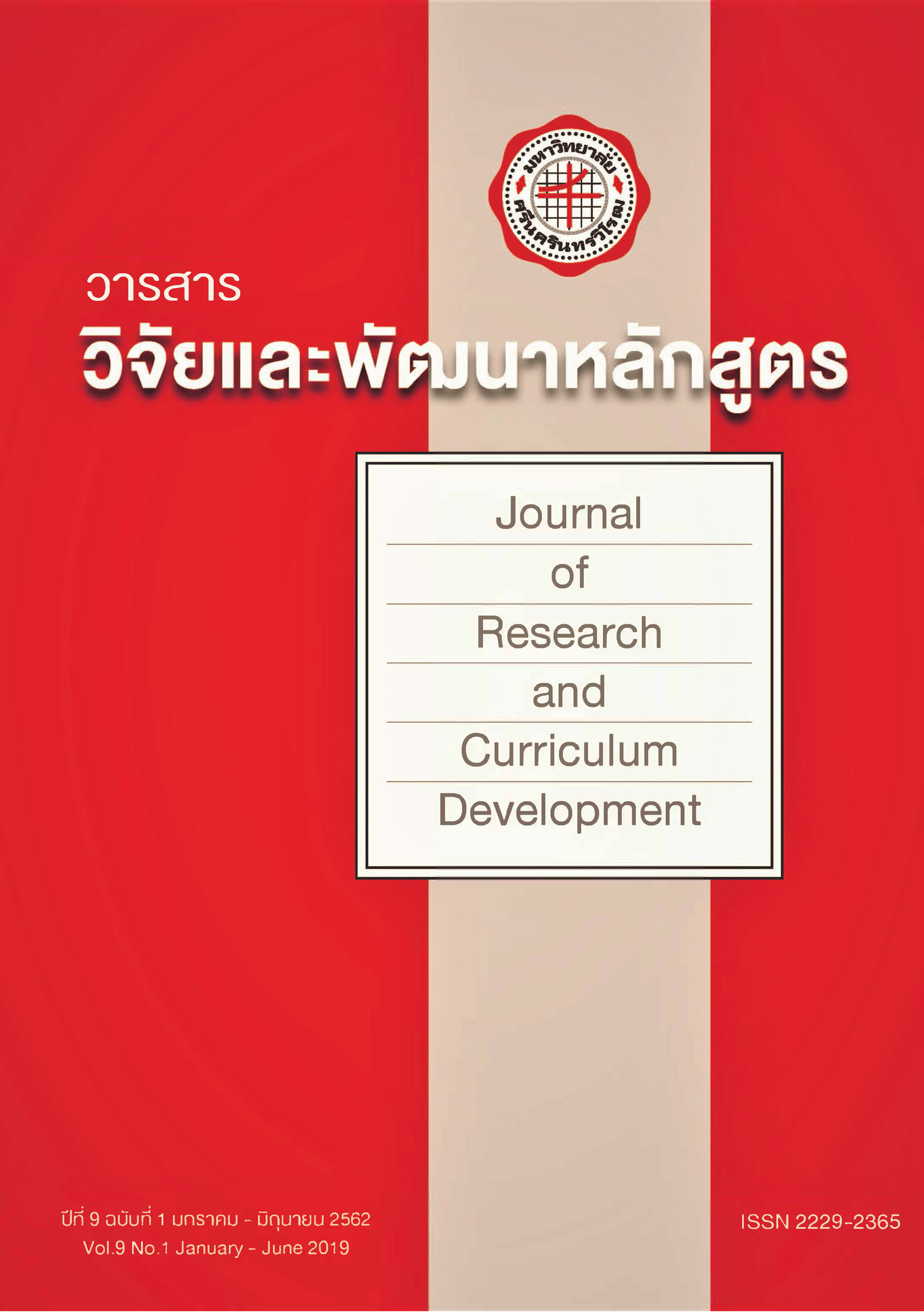STEAM Education : นวัตกรรมการศึกษาบูรณาการสู่การจัดการเรียนรู้
Keywords:
STEAM Education, Learning managementAbstract
STEAM Education is an integrated learning management approach comprised of 5 specific disciplines; science, technology, engineering, arts and mathematics, all of which aims to enhance learners’ skills in problem solving and product development. There are 3 main components in STEAM Education: presentation situation, creative design and emotional touch. Developing these 3 components will encourage learners to have the skills and abilities that correlate with the constantly changing needs of our society and the world in the 21st century.
References
นภดล เลือดนักรบ และคณะ. (2560). ICT: เทคโนโลยีสารสนเทศเพื่อสนับสนุนการเรียนรู้สู่การเปลี่ยนแปลง, วารสารวิทยาลัยพยาบาลบรมราชชนนี อุตรดิตถ์, 9(1), 70-80.
วิชัย วงษ์ใหญ่ และมารุต พัฒผล. (2557). กระบวนทัศน์ใหม่ การ Mentor and Coaching ในสังคมสื่อสารสนเทศ เพื่อเสริมสร้างศักยภาพนักศึกษาฝึกประสบการณ์วิชาชีพครู. กรุงเทพฯ: บัณฑิตวิทยาลัย มหาวิทยาลัยศรีนครินทรวิโรฒ.
ศูนย์สะเต็มศึกษาแห่งชาติ. (2557). สะเต็มศึกษาและการออกแบบเชิงวิศวกรรมศาสตร์. สืบค้นเมื่อ 23 กันยายน 2561, จาก https://www.stemedthailand.org
สถาบันส่งเสริมการสอนวิทยาศาสตร์และเทคโนโลยี. (2558). คู่มือจัดกิจกรรมสะเต็มศึกษา ระดับชั้นประถมศึกษา ปีที่ 1-3. กรุงเทพฯ: องค์การค้าของ สกสค.
Baek, Y., Park, H., Kim, Y., Noh, S., Park, J–Y., Lee, J. Han, H. (2011). STEAM education in Korea. Journal of Learner-Centered Curriculum and Instruction, 11(4), 149–171.
Fioriello, P. (2010). Understanding the basics of STEM education. Retrieved September 15, 2018 from https://drpfconsults.com/understanding-the-basics-ofstem-education
Fullan, M. & Duckworth, S., (2008). 21st Century skills: 6c's of Education. Retrieved September 18, 2018 from https://blog.awwapp.com/6-cs-of-education-classroom/
Fullan, M. (2008a). The six secrets of change. San Francisco: Jossey-Bass.
Kim, H. S. (2012). A study on relation and importance of art education and STEAM education. Journal of Korean Society of Basic Design and Art, 13(5), 105–113.
Kolodner, J. L., Crismond, D., Fasse, B. B., Gray, J. T., Holbrook, J., Ryan, M., & Puntambekar, S. (2003). Problem-based learning meets case-based reasoning in the middle-school science classroom: Putting a learning-by-design curriculum into practice. Journal of Learning Sciences, 12(4), 495–547.
Korea Foundation for the Advancement of Science and Creativity (KOFAC). (2012). Policy directions of STEAM education: Introductory training of KOFAC STEAM. Seoul, Korea: Foundation for the Advancement of Science and Creativity.
Lee, H. (2013). Understanding and application of STEM/STEAM education. Seoul, Korea: Bookshill. Lincoln.
Maes, B. (2010). Stop talking about “STEM” education! “TEAMS” is way cooler. Retrieved September 18, 2018 from https://bertmaes.wordpress.com/2010/10/21/teams/ Ministry
National Grid, Boston Children’s Museum and WGBH. (2010). STEM Sprouts Science, Technology. Engineering & Math Teaching Guide. Retrieved September 18, 2018 from https://www.bostonchildrenmuseum.org/sites/default/files/pdfs/STEMGuide.pgf.
Partnership for 21 st Century Skills. (2009). Framework for 21 st Century Learning. Retrieved September 20, 2018 from https://www.p21.org/storage/documents/P21_Framework_Definitions.pdf
Yakman, G. (2008). STEAM Education: an overview of creating a model of integrative education. Pupils Attitudes Towards Technology 2008 Annual Proceedings. Netherlands.





